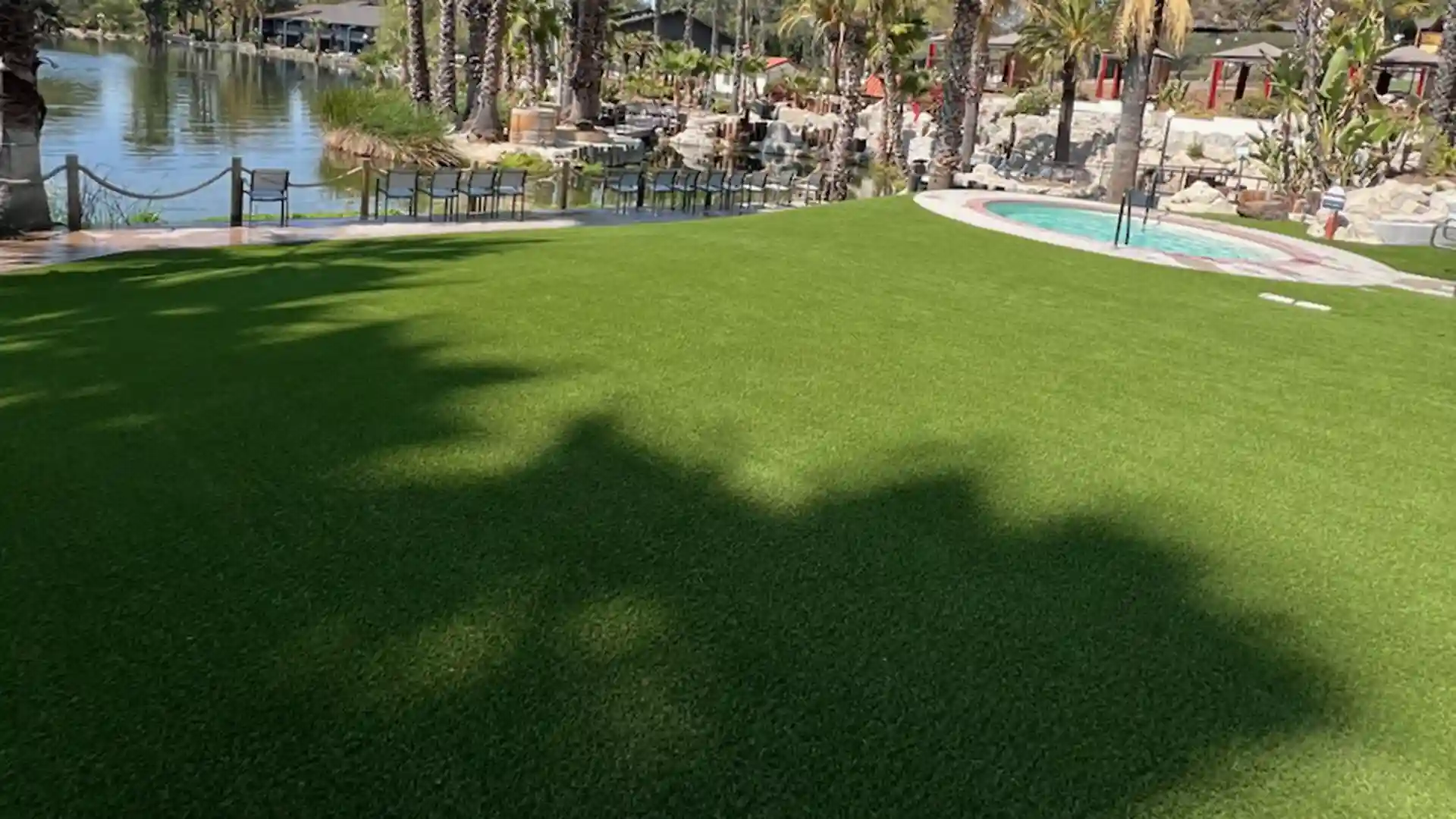
Sustainable SYNLawn helps preserve Philadelphia’s Historical Hill-Physick House
Philadelphia, PA — “We owe it to our patrons and the citizens of Philadelphia to give them a usable, sustainable space year-round,” says the Executive Director of the Philadelphia Society for the Preservation of Landmarks, Kayla Anthony. She helps oversee many of the historic landmarks in and around Philadelphia. One particular landmark is the Hill-Physick House, which needed its outside lawn renovated to withstand foot traffic. The staff found a choice that offers residents of Philadelphia a luscious, green lawn while ensuring the longevity of one of the city’s most treasured landmarks, inside and out.
Preserving Hill-Physick House traditions
When Anthony took the executive director job, she knew she wanted to keep the tradition of Hill-Physick House preserved for generations to come. That included making a decision that had been “a long-time source of agony.” Soy-biobased SYNLawn artificial grass provided the perfect solution.
“The outside green space sees a lot of visitors each year,” Anthony says of the backyard addition created by the last private owner of the House before PSPL took ownership. “People love to come out and see the space and even sometimes have receptions or wedding ceremonies here.” The space offered the House a chance to increase foot traffic during a time when historic landmarks are still dealing with the effects of lost revenue due to the COVID-19 pandemic. However, high foot traffic and mother nature can bring challenges, such as sustaining healthy grass growth and drainage issues due to heavy rainfall.
Finding a solution with renewable biobased grass
“So much foot traffic hurt the grass with limited usage,” Anthony recounts. “Even worse, mud got tracked into the House during rainy seasons. So we wanted to find a solution to prevent damage to such a historic place. The option to sod was becoming cost prohibitive. SYNLawn’s soy-biobased grass offered so many solutions.” SYNLawn’s artificial grass is made with a soy-based backing called EnviroLoc™, which uses polyol technology made from U.S. Soybean oil that is widely available as well as rapidly renewable. Its use of soybean oil displaces up to 60 percent of the petroleum-based polyurethane found in many brands of artificial grass.
The House’s caretaker, Megan Thibodeaux, did extensive research and reached out to JoAnne Seifert of SYNLawn of Eastern Pennsylvania. Seifert, understanding the sensitivities around any changes to a historic landmark, shared how SYNLawn’s grass, made with oil from sustainably grown soybeans, offers a huge sustainable benefit that keeps the historic nature of landmarks intact. She explained that SYNLawn’s grass eliminates the need for watering, pesticides, and fertilizers, and it also reduces maintenance and air and noise pollution from lawn mowing and is more cost-effective than sod, especially with the Limited Lifetime warranty offered by SYNLawn.
Kayla Anthony (right), Executive Director of the Philadelphia Society for the Preservation of Landmarks, surveys the lush green grass installed at the Hill-Physick House. The greenspace was installed by JoAnne Seifert (left) and her team, ensuring a sustainable option that uniquely helps to preserve another one of Philadelphia’s historic landmarks for future generations.
Creatively sustaining the Hill-Physick House Landscape
“I understand historical societies have to think creatively about how to sustain themselves for the future,” says Seifert. “We talked about how the Society could give back to their patrons with a realistic looking, highly useable, economically sound, sustainable product that could help mitigate drainage issues, which would in turn increase patronage and help the Physick House financially. A win-win for everyone!”
After speaking with her board of trustees, Anthony and the Hill-Physick House leadership agreed they had their solution. She explained that the new green space’s positive environmental impact and performance benefits offer much-needed longevity for historic facilities.
“This space isn’t just lush grass,” says Anthony. “It’s an extension of our historic house museum. Finding a sustainable solution like this one keeps our historical landmarks thriving and surviving.”
















